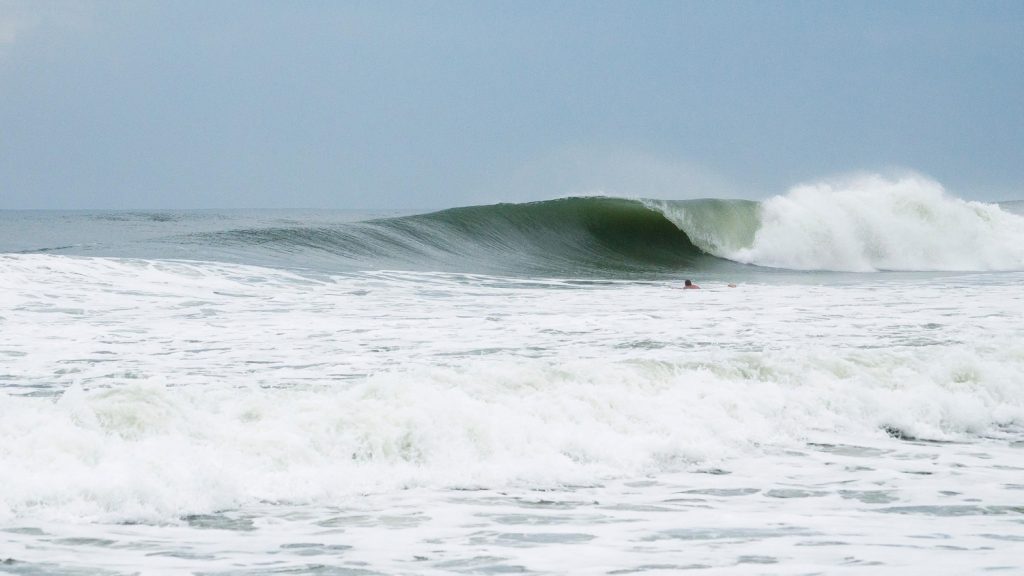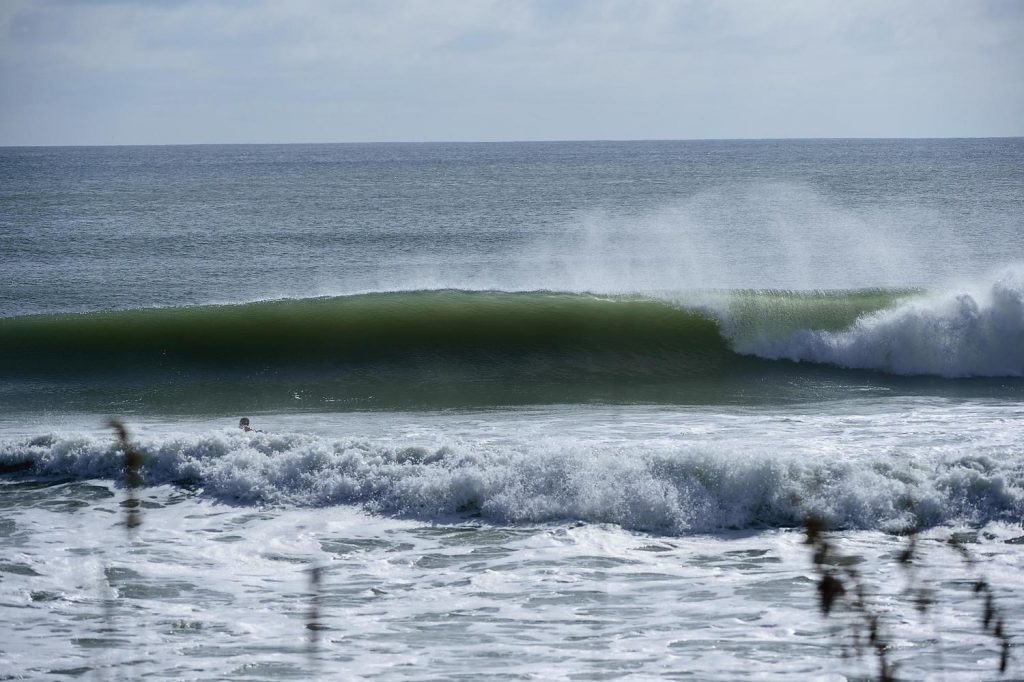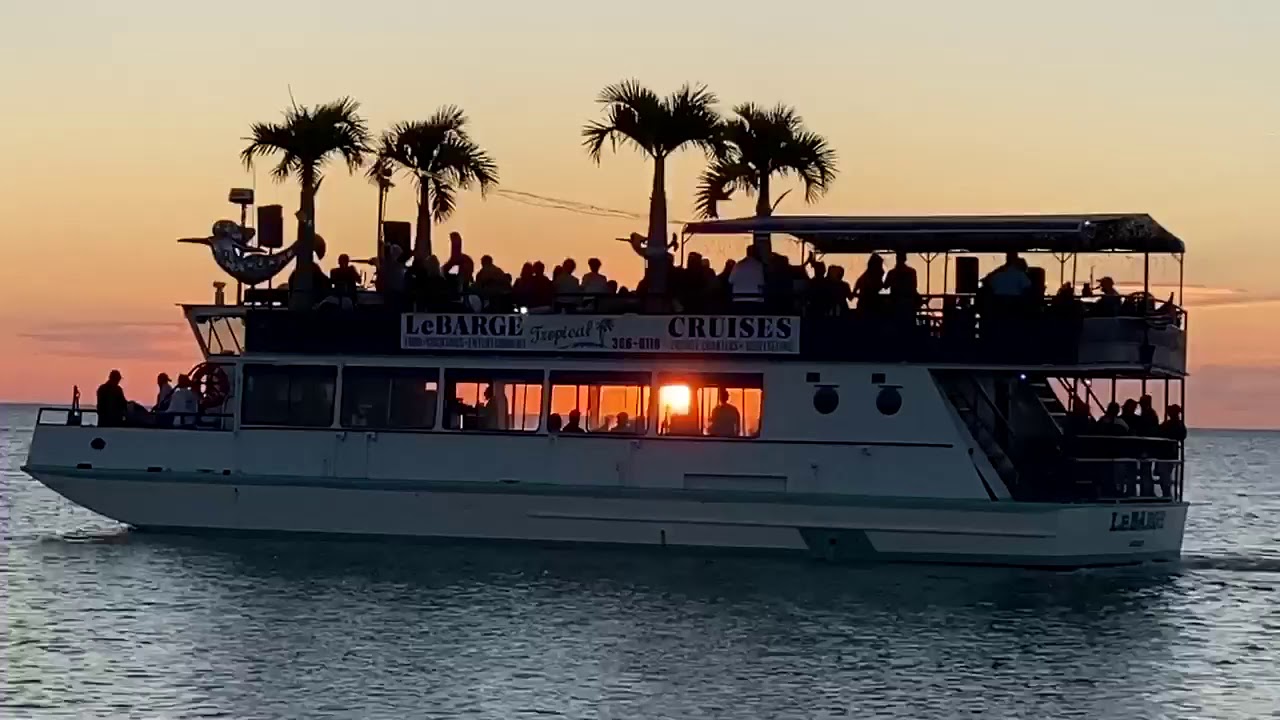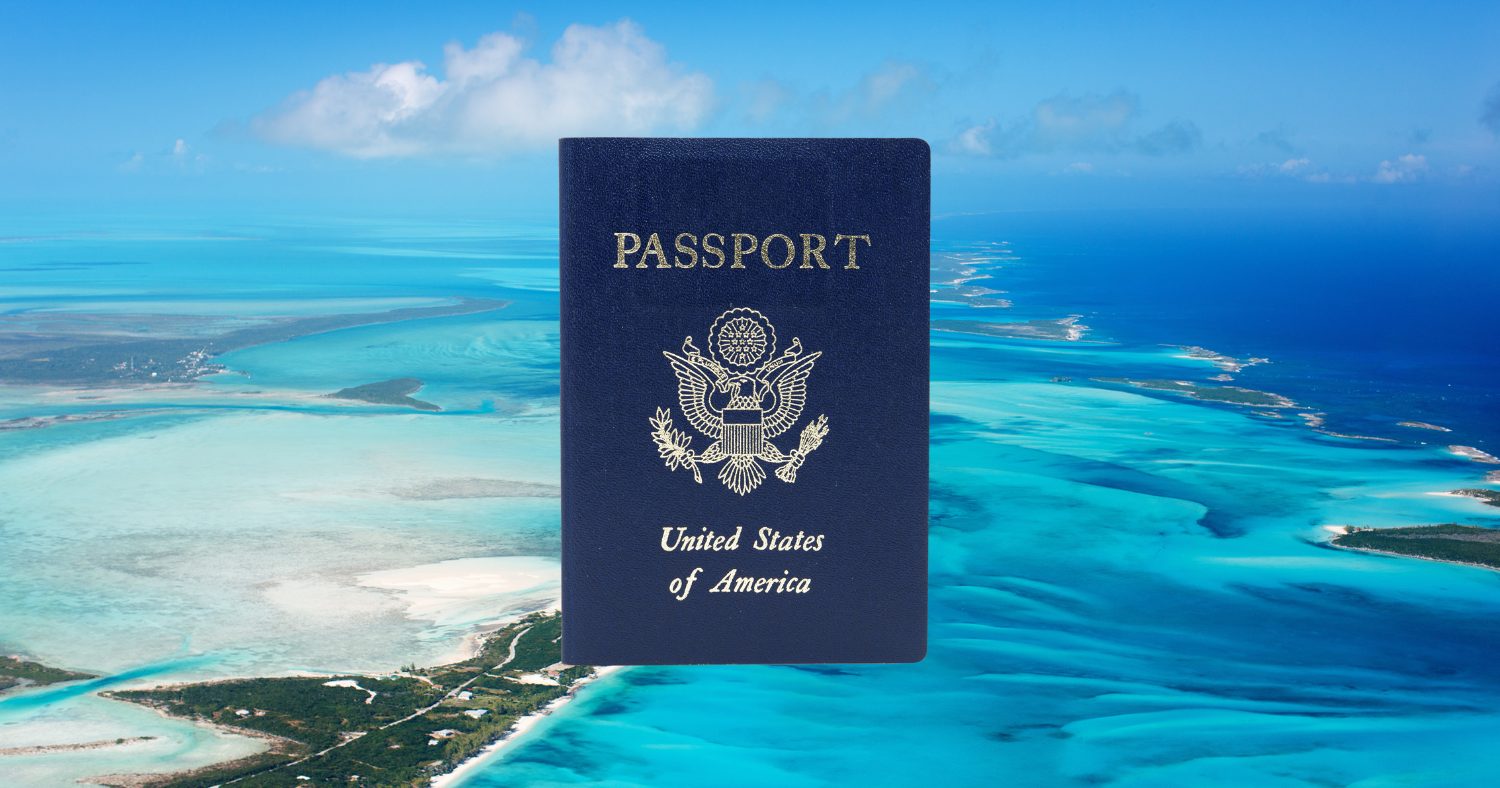Sebastian Inlet Webcam: Live Beach Views and Surf Conditions
Sebastian Inlet is a renowned location in Florida, perfect for surfing, fishing, and other water activities. With its strategic spot on the Space Coast, this inlet is a hotspot for both locals and tourists.

By using the Sebastian Inlet webcam, visitors can check the current weather, surf conditions, and more, making it easier to plan their visit.
At Sebastian Inlet State Park, visitors can enjoy a live view of the beach, the north jetty, and the surf. This feature helps not only surfers looking for the perfect wave but also anglers and boaters.
The webcams are updated frequently, providing real-time data on tides, wind, and other conditions.

From watching the waves crash to catching a glimpse of the latest weather updates, the Sebastian Inlet webcam offers an immersive experience. The park’s facilities cater to a variety of activities, ensuring a memorable visit regardless of one’s interests.
Whether you are planning to surf, fish, or simply relax by the beach, the webcam serves as a useful tool to enhance your experience.

Key Takeaways
- The Sebastian Inlet webcam provides current weather and surf conditions.
- Updates help surfers, anglers, and boaters plan their activities.
- Sebastian Inlet is a prime spot in Florida for diverse water activities.
Overview of Sebastian Inlet State Park
Sebastian Inlet State Park is a popular destination located in Melbourne Beach, Florida. This park features more than 300 miles of multi-use trails for paddling, hiking, and mountain biking.
Visitors can explore both rugged paths and paved routes.
The park is well-known for its water activities. The beaches here offer excellent spots for surfing, fishing, and snorkeling.
Surfing: The north jetty has reliable waves, ideal for surfers. The Monster Hole, a famed sandbar, often has waves reaching up to ten feet.

Fishing: Anglers enjoy fishing from the jetties. The variety of fish includes snook, redfish, and bluefish.
Snorkeling: Calmer waters in the Indian River Lagoon are perfect for snorkeling and kayaking. These areas are safe and offer a chance to see marine life up close.
Amenities
- Picnic areas
- Campgrounds
- Restrooms
- Concession stands
Whether you are riding the waves, strolling along the shores, or fishing from the jetties, Sebastian Inlet State Park is a paradise for beach lovers and outdoor enthusiasts alike.
History and Significance of Sebastian Inlet
Sebastian Inlet, located on Florida's Space Coast, has a rich history that dates back to the mid-1800s. The first settlers in the Sebastian River area aimed to create a water passage from the Indian River to the Atlantic Ocean.
Reverend Thomas New and D.P. Gibson were among the early pioneers.
Efforts to open the inlet were frequent and intense. Various attempts met with limited success until the early 1900s. The Inlet finally became a reliable water route in the 1930s. It was created to boost local economy by supporting fishing and trade.
A significant feature of Sebastian Inlet is Monster Hole, well-known for its surf breaks. This wave spot attracts surfers from all over, contributing to the area's cultural and economic life.

The Sebastian Inlet Bridge is another landmark. It improves local connectivity and offers a breathtaking view of the ocean and the surrounding environment. It also caters to fishermen, who benefit from the rich fishing grounds.
The inlet is within the Space Coast, famous for its proximity to Cape Canaveral and the Kennedy Space Center. This unique location blends natural beauty with space exploration history.
In the 18th century, the area near the Inlet was also part of the Treasure Coast. Notably, Captain-General Don Juan Esteban de Ubilla’s fleet sank here during a hurricane, making it an important archaeological site.
The Inlet today is a hub for boating, fishing, and surfing. Facilities like the Sebastian Inlet Webcam provide real-time information about conditions, enhancing safety and planning for visitors.
Navigating Sebastian Inlet Webcams
Sebastian Inlet offers a variety of webcams for different sections, providing essential views for visitors to make informed decisions. Here are the detailed descriptions for each relevant webcam located around the inlet.
North Jetty Webcam
The North Jetty Webcam provides real-time views of the activity on the northern part of the inlet. This area is popular with fishermen and surfers.
The webcam captures changing tides and wave conditions, helping users plan their visit effectively.
Visitors can check the water clarity and traffic around the jetty. This webcam is a valuable tool for anyone planning to fish or surf, giving them a good look at current conditions before heading out.
South Side Webcam
The South Side Webcam offers views from the southern part of Sebastian Inlet. This camera provides insights into beach and surf conditions, ideal for those interested in swimming or sunbathing.
The webcam helps in understanding current weather and crowd levels, making it easier to choose the best times to visit. It's also useful for checking the conditions before diving or snorkeling in the nearby waters.

Surf Guru and Surfline Collaborations
Sebastian Inlet webcams collaborate with Surf Guru and Surfline to provide surfers with detailed forecasts and real-time wave information. These partnerships enhance the accuracy and utility of the webcams.
Surfline and Surf Guru give detailed surf reports and live streaming video, ensuring surfers get the latest information about wave height, wind direction, and water temperature. This collaboration is particularly helpful for both local and visiting surfers looking to catch the best waves.
Surf Conditions and Resources
Sebastian Inlet is a popular spot for surfing, offering detailed reports on wave, swell, wind, and tide conditions. Understanding these elements helps surfers make informed decisions about when to catch the best waves.
Wave and Swell Monitoring
Sebastian Inlet boasts multiple surf webcams operated by organizations like Surfline and Surf Guru. These cams provide live HD views of the surf, enabling surfers to assess the size, frequency, and direction of waves in real time.
The inlet's unique geography results in notable wave patterns that can vary from moderate swells to larger, more challenging waves.
Surfers frequently check these resources to plan their sessions and ensure they are hitting the waves at optimal times.

Understanding Tides at the Inlet
Tides play a crucial role in shaping surf conditions, influencing the wave break and overall surf quality at Sebastian Inlet.
Detailed tide charts are available, often updated every 10 minutes, showing the high and low tide times.
Knowing the tide schedule not only ensures better surf experiences but also enhances safety.
Low tides can expose underwater hazards like rocks and reefs that are otherwise hidden, while high tides can lead to stronger currents.
Wind Patterns and Effects
Wind is another critical factor affecting surf at Sebastian Inlet. Specific wind conditions can either enhance or deteriorate wave quality.
For example, offshore winds often create smoother, more desirable waves.
Surf reports frequently include real-time wind data, sourced from nearby weather stations.
Monitoring wind speed and direction helps surfers anticipate changes in wave shape and consistency. Knowing when the wind patterns will shift can make a significant difference in catching a perfect wave.
Weather Tracking at Sebastian Inlet
Monitoring weather at Sebastian Inlet is essential for ensuring safe and enjoyable activities. This section provides essential information on live weather data and how to forecast conditions for various water-related activities.
Live Weather Data
Sebastian Inlet offers up-to-date weather data via its high-definition webcams. These cameras provide live feeds that include real-time information on temperature, wind speed, wind direction, pressure, and humidity.
Weather data updates every 10 minutes.
Users can easily check current conditions, which is crucial for activities like boating, fishing, and surfing.
Knowing the exact wind speed and temperature helps to plan better and prevent potential hazards.
Forecasting for Water Activities
Accurate forecasting is vital for safe water activities. The webcam services at Sebastian Inlet are equipped to provide detailed weather forecasts.
This includes information about upcoming wind conditions, temperature changes, and pressure variations.
Surfers, boaters, and swimmers can rely on these forecasts to decide the best times to engage in their activities.
For example, knowing the wind direction and whether there may be a temperature drop can help surfers anticipate wave conditions. These forecasts ensure that all users make informed decisions based on reliable data.
Sebastian Inlet for Anglers and Boaters
Sebastian Inlet is a prime spot for fishing and boating enthusiasts. The area offers excellent fishing conditions and important navigation tips for boaters.
Fishing Conditions
Sebastian Inlet is renowned for its diverse and abundant fishing opportunities. Anglers can find a variety of species, including snook, redfish, tarpon, and jack crevalle.
The best fishing spots are often near the jetty, where fish congregate due to the structure and water flow.
The inlet's tides and currents play a crucial role in fishing success. Incoming and outgoing tides bring fish closer to the shore and jetty, making these times ideal for anglers.
Using local baits like live shrimp and mullet can increase the chances of a good catch.
Fishing from a boat allows for access to deeper waters and species like grouper and snapper. Charter fishing services are available for those who prefer guided trips.
For shore-based fishing, the jetty provides excellent vantage points and is well-maintained for angler convenience.
Boating and Navigation Tips
Navigating through Sebastian Inlet requires attention to detail due to its narrow channel and strong currents. The inlet serves as the only charted passage between Cape Canaveral and Fort Pierce, making local knowledge essential.
Boaters should be aware that the fixed bridge (A1A) has a clearance of 39 feet, which may limit access for taller vessels.
Fair-weather conditions are preferable as rough seas can make the inlet hazardous for smaller boats. Check weather updates and the inlet webcam before planning a trip to ensure safe and optimal boating conditions.
The inlet is largely used by recreational fishing boats, so it's common to see other anglers on the water.
Boaters should also take note of the marked navigation aids and follow them strictly.
The channel is well-marked, but currents can be strong, especially during tidal changes.
Regular checking of navigational charts and being aware of local boating regulations can help avoid any mishaps.
Essential Boating Tips:
- Check the water depth: Know the tidal schedules.
- Monitor weather conditions: Use reliable sources.
- Follow navigation markers: Stay within the channel.
Amenities and Facilities near Sebastian Inlet
Sebastian Inlet and its surrounding areas offer a variety of amenities and facilities. Visitors can find local accommodations and picnic areas, ideal for both short visits and extended stays.
Local Accommodations
For those looking to stay overnight, there are several options near Sebastian Inlet. Melbourne and Melbourne Beach offer a range of hotels and inns.
Oceanfront rentals and beachside resorts provide stunning views and easy access to the beach.
Some popular options include Tuckaway Shores Resort and Sea View Inn. Tuckaway Shores is known for its family-friendly atmosphere, while Sea View Inn is praised for its beautiful beachfront location.
Many accommodations offer amenities like free Wi-Fi, swimming pools, and complimentary breakfasts to enhance the stay.
Camping enthusiasts will enjoy the campgrounds at Sebastian Inlet State Park. The park offers full-facility camping with options for both tent and RV camping. Sites include electric hookups, restrooms, and picnic tables.
Picnic and Leisure Areas
Sebastian Inlet State Park is perfect for picnics and leisurely activities. There are several designated picnic areas equipped with tables and grills. These areas are shaded and offer a relaxing space for family gatherings or a casual meal.
For those who enjoy outdoor activities, the park offers playgrounds, hiking trails, and beach access.
The two jetties extending into the Atlantic Ocean are excellent spots for fishing. The bridge catwalks provide additional viewpoints and are ADA accessible.
Boating enthusiasts can take advantage of the boat launch facilities. These launches provide easy access to nearby waters, ideal for fishing and diving adventures.
For those interested in a quieter experience, there are plenty of wooded areas and nature trails to explore.
Environmental Conservation Efforts
Sebastian Inlet is committed to preserving its natural beauty and marine life through various conservation and sustainable tourism initiatives. These efforts aim to balance enjoyment of the park with the protection of its delicate ecosystems.
Protecting Marine Life
Efforts to protect marine life at Sebastian Inlet include habitat restoration and species monitoring. The park works with marine biologists to ensure that sea turtles, manatees, and shorebirds have safe environments for nesting and feeding.
Regular beach cleanups are organized to remove debris that can harm wildlife. Additionally, fishing regulations are enforced to prevent overfishing and to protect endangered species.
Educational programs also inform visitors about the importance of marine conservation.
Sustainable Tourism Initiatives
Sustainable tourism initiatives at Sebastian Inlet focus on promoting eco-friendly practices among visitors.
Recycling stations are conveniently placed throughout the park to reduce waste.
The park encourages the use of reusable water bottles and provides refill stations.
Guided nature tours emphasize the importance of preserving the environment while enjoying it.
Through these measures, Sebastian Inlet aims to minimize its environmental footprint and foster a culture of conservation among its visitors.
Community and Cultural Events
Sebastian Inlet is not just known for its scenic beauty but also for its vibrant community and cultural events.
Annual Fishing Tournaments: Every year, the inlet hosts multiple fishing tournaments. These events attract anglers of all ages and skill levels.
It's a chance for the community to come together and celebrate their love for fishing.
Surfing Competitions: The inlet is famous for its surf-friendly waves. Competitions held here draw surfers from around the world.
Watching these events is free, and it's a great way to experience the local surfing culture.
Beach Clean-Up Days: Community-driven beach clean-ups are regularly held at Sebastian Inlet. These events bring together local residents and visitors who want to keep the beaches clean.
Live Music Festivals: Occasionally, the park hosts live music events featuring local bands. These festivals offer a mix of genres and provide entertainment for visitors of all ages.
Bring a blanket and enjoy the tunes under the open sky.
Historical and Nature Tours: Guided tours are organized to educate the community about the inlet's rich history and diverse wildlife.
It's an excellent way for people to learn about the cultural significance of the area while enjoying the beautiful surroundings.
Directions and Access Information
Sebastian Inlet is easily reachable by road and offers several water access points. Visitors can enjoy the scenic surroundings and diverse activities available in the area.
Reaching Sebastian Inlet by Road
Sebastian Inlet is located on Florida's east coast, within Sebastian Inlet State Park. The park lies between Melbourne Beach and Vero Beach.
To reach the inlet by car, take Interstate 95 and exit at Route 512. Follow Route 512 east to Route 1.
Head north on Route 1, and then turn east on Route 510 towards the coast. The entrance to the park is on Highway A1A, just over the bridge.
There is ample parking available at Sebastian Inlet State Park. Parking spots are located close to key areas such as the north and south jetties and the beach.
Water Access Points
Sebastian Inlet also features several water access points. Boaters can access the inlet from the Indian River Lagoon, which connects to the Atlantic Ocean.
The inlet has boat ramps available, and docks are positioned conveniently. Paddlers and kayakers can use these ramps to launch their crafts.
Fishing enthusiasts will find designated spots along the jetties. The inlet's calm waters are perfect for launching smaller watercraft, while the nearby sandbars offer great spots for relaxing by the water.
Photography and Filming Opportunities
Sebastian Inlet offers many spots perfect for photography and filming, from stunning beach views to dynamic surf scenes. Drone pilots must follow specific guidelines to ensure safety and respect privacy while capturing aerial footage.
Scenic Spots for Photography
Sebastian Inlet is known for its beautiful beaches and unique coastal features.
The north jetty provides a great spot to capture waves crashing against the rocks. During the right conditions, "Monster Hole," a sandbar offshore, forms impressive wave shapes that are a fantastic subject for photos.
Sunrise and sunset are prime times for capturing stunning sky and water reflections. The bridge over the Inlet offers a high-vantage point for wide-angle shots of both the ocean and the interior waterway.
Wildlife enthusiasts can also photograph various bird species and marine life that frequent the area.
Guidelines for Drone Pilots
Drone pilots should adhere to FAA regulations when flying in and around Sebastian Inlet.
These rules include maintaining a maximum altitude of 400 feet and keeping the drone within visual line-of-sight.
Avoid flying over crowded areas or near the bridge to minimize any risks.
It is also recommended to check local rules as some state and local parks may have additional restrictions on drone use.
Respect privacy and avoid flying over private properties or areas where people are gathering.
Be mindful of wildlife; sudden movements from drones can disturb animals. Flying during less busy times can help ensure safer and more respectful operations.
Always have proper identification and permits if required.
Best Times to Visit and Seasonal Considerations
Visiting Sebastian Inlet can be a great experience, especially if you plan around the seasons. Knowing when to visit helps ensure optimal conditions for activities like surfing and fishing.
Peak Seasons for Surf and Fishing
The best time to visit Sebastian Inlet for surfing falls within the late summer to early fall months, from August to October. During this period, the waves are generally more favorable due to Atlantic hurricane swells. Surfers often flock to the area to take advantage of these conditions.
For fishing, peak season aligns closely with the summer months. June through September offer warmer waters, attracting a variety of fish species. Anglers come during this time to catch snook, redfish, and tarpon. The seasonal shifts, moonrise phases, and tidal changes all play critical roles in fishing success.
Offseason Visits
The offseason, from November to April, offers a quieter experience at Sebastian Inlet. Surf conditions are less predictable, but fewer crowds make it ideal for those who prefer a more relaxed visit.
Winter months still provide occasional surfable waves, though they are generally smaller. Fishing remains viable in these colder months, but the species availability changes. Anglers might find more sheepshead and flounder during this time. Check the weather and webcam for updated conditions, as they can change rapidly.
Frequently Asked Questions
Learn more about the Sebastian Inlet webcam, surf conditions, fishing reports, park fees, and more. This guide provides clear answers to common questions visitors have about Sebastian Inlet State Park.
What are the current surf conditions at Sebastian Inlet?
To view the current surf conditions at Sebastian Inlet, visitors can check the live webcam. The webcam updates every 10 minutes with the latest photos and real-time weather data.
How can I find the Sebastian Inlet fishing report for today?
Fishing enthusiasts can get the latest fishing report by visiting the official Sebastian Inlet or local fishing websites. These platforms provide updates on fishing conditions and the types of fish currently being caught.
Are there any fees to access Sebastian Inlet State Park?
Yes, there are fees to access Sebastian Inlet State Park. The entry fee is generally charged per vehicle. Visitors can check the park’s official website for the most current fee information.
What is the best way to view the Sebastian Inlet webcam?
The best way to view the Sebastian Inlet webcam is by visiting the official Sebastian Inlet District website or designated webcam pages. These sites often offer a 360-degree view and up-to-date weather details.
Is swimming allowed at Sebastian Inlet State Park?
Swimming is allowed at specific areas within Sebastian Inlet State Park. It is advisable to check the latest safety and weather updates via the park’s website or webcams before heading out to swim.
What is today's water temperature at Sebastian Inlet?
Today's water temperature at Sebastian Inlet can be found on the live webcam feed or relevant weather websites. These resources provide real-time temperature readings for visitors planning water activities.
Charlie is Editor-in-Chief of Sea Magazine







